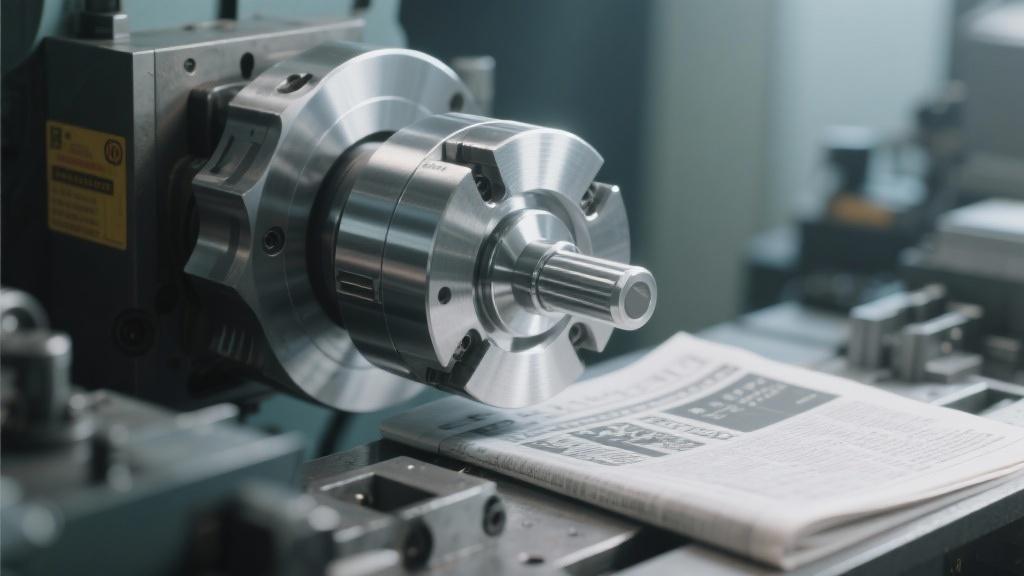However, challenges such as cost-effectiveness, tooling, and lead times must be carefully considered. We’ll explore the various machining methods available for aluminum, discussing how each one can cater to the unique requirements of small batch projects. From CNC machining to advanced techniques, you’ll gain insights into how to optimize both quality and production time.
Additionally, we’ll highlight real-world applications and success stories where aluminum machining has proven to be a game-changer for businesses navigating small-volume orders. This article aims to provide a comprehensive overview of the benefits and potential drawbacks of aluminum machining in small batch production, equipping you with the knowledge to make informed decisions for your manufacturing needs. Whether you’re a seasoned professional or new to the industry, this exploration will empower you to leverage aluminum machining effectively, ensuring that your small batch projects meet the highest standards of excellence. Join us on this journey to uncover whether aluminum machining is indeed the best choice for small batch production!
Is Aluminum Machining the Best Choice for Small Batch Production?
With the increasing demand for customization and rapid prototyping, small batch production has taken center stage in the manufacturing world. But when it comes to choosing the right materials and methods, many often wonder if aluminum machining is the best choice for their specific needs. Let’s explore this area to see what makes aluminum machining a popular option for small batch production, its advantages, and some potential considerations.
What Makes Aluminum a Top Contender?
Aluminum is widely regarded for its lightweight and durable properties, which makes it highly desirable for various applications. It is not just easy to machine but also has excellent corrosion resistance, making it suitable for products that need to withstand harsh environments. If you’re producing components for the automotive or aerospace industries, for instance, machining aluminum could be the key due to its strength-to-weight ratio.
One important aspect to consider is that aluminum can be easily shaped and cut with minimal wear on tools, improving efficiency in production. Unlike harder materials that can lead to tool breakage or extend machining times, aluminum tends to allow for quicker turnaround—ideal for small batch production where time is often of the essence.
Economies of Scale in Small Batches
When we talk about small batch production, economics can be a significant consideration. Traditional machining processes might not be as cost-effective for small volumes due to setup times and tooling costs. However, aluminum’s relatively lower cost and high machinability can create a balance, allowing businesses to maintain quality without overextending budgets.
Moreover, using aluminum also opens up a range of options: you can choose from different types of alloys, each providing a specific set of properties that can match your project requirements. You might have projects requiring intricate designs, and aluminum allows for that flexibility, especially when leveraging CNC machining for high-precision parts.
Are There Drawbacks?
Of course, like any material, aluminum has its downsides. Issues like thermal expansion during machining or the need for specialized handling techniques could come into play. Additionally, while aluminum provides excellent strength for weight, it may not always be the best option for high-stress applications compared to other materials like titanium or steel.
It’s also crucial to note that aluminum’s surface finishes can impact aesthetics and functionality. Depending on the needs of your project, ensuring your manufacturing process includes a finishing stage could be crucial for quality assurance.
Finally, working with aluminum requires a deep understanding of its properties to maximize its potential. This is where the expertise of your machining team becomes invaluable. They need to know how to navigate aluminum’s unique characteristics effectively to avoid issues like tool wear and inconsistent quality.

Conclusion
So, is aluminum machining suitable for small batch production? Generally, yes! Its lightweight nature, versatility, and cost-effectiveness make it a highly favorable choice for many manufacturing applications. Nevertheless, assessing the specific requirements of your project is essential. Understanding both the advantages and potential drawbacks will ensure that you leverage aluminum machining to its fullest potential. If you’ve experienced either side of the debate, I’d love to hear your thoughts and experiences!
What are the main advantages of using aluminum for small batch production?
Aluminum is lightweight yet strong, which makes it an ideal choice for various applications. It’s also highly machinable, meaning it can be shaped and formed into complex designs with ease.
Additionally, aluminum has a natural resistance to corrosion, extending the lifespan of the final product. It allows for faster production times due to its ease of machining, which can be a game-changer when you’re working with small batches.
How does aluminum machining compare to other materials for small batch jobs?
When comparing aluminum to materials like steel or titanium, aluminum often stands out due to its lower cost and lighter weight. It allows for quicker production times and less wear on tools, which is vital in a small batch setting.
However, for applications that require ultimate strength or resistance to high temperatures, other materials might be more suitable. Thus, it really comes down to the specific requirements of each project.
What are some potential drawbacks of aluminum machining?
Some drawbacks include thermal expansion during machining, which can affect precision. Also, while aluminum is easier to machine, the speed can lead to issues like tool wear if not monitored closely.
Additionally, for high-stress applications, aluminum might not always provide adequate strength compared to other materials. These factors should be considered when deciding on aluminum for your production needs.
Is it cost-effective to use aluminum in small batch production?
Generally, yes! Aluminum is known for being relatively inexpensive while still providing high-quality results. The lower material costs combined with its machinability often balance out the overall expenses.
However, setup costs and tooling can still add up, especially if your batch sizes fluctuate. It’s important to analyze the specific needs and potential returns for a particular project to find the best financial fit.
What machining methods are best for aluminum small batch production?
CNC machining is one of the most popular methods for aluminum machining due to its precision and efficiency. It allows for intricate designs to be produced quickly while maintaining high standards.
Other methods, like laser cutting or water jet cutting, can also be utilized depending on the complexity and material thickness. Choosing the right method often depends on the project’s specific requirements and desired outcomes.



